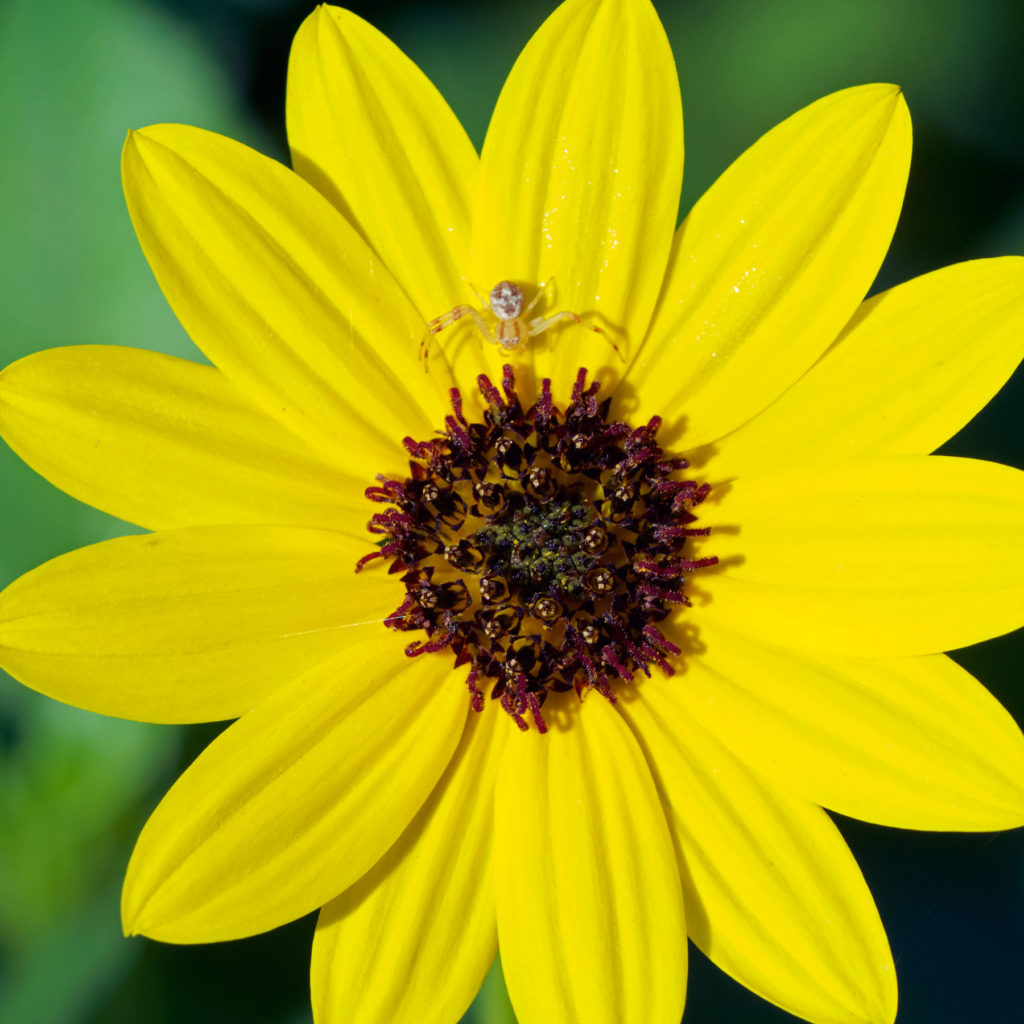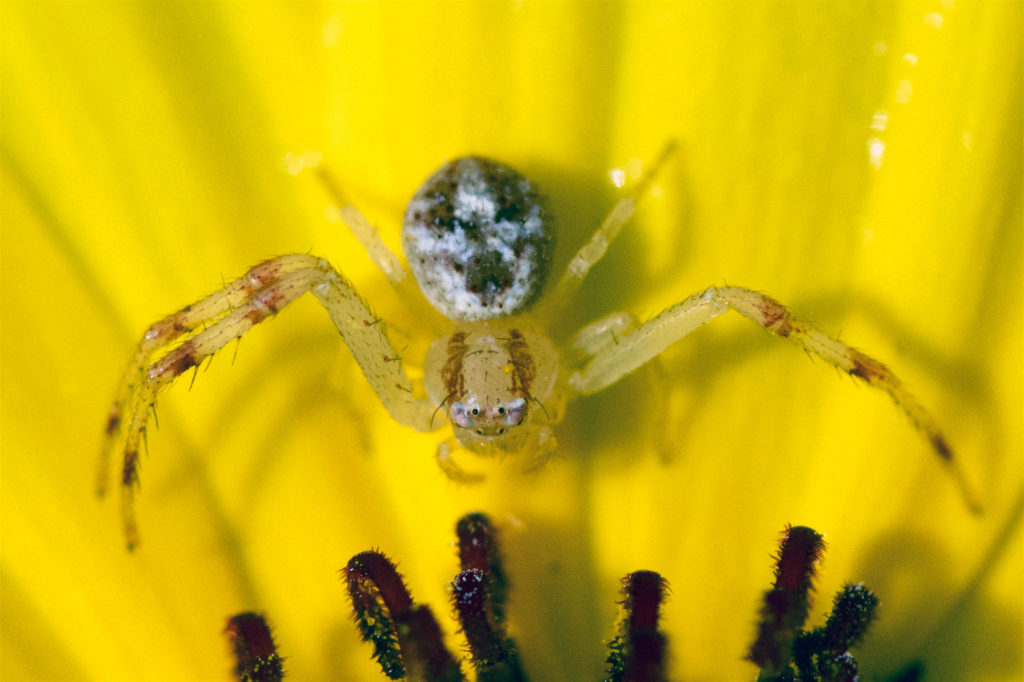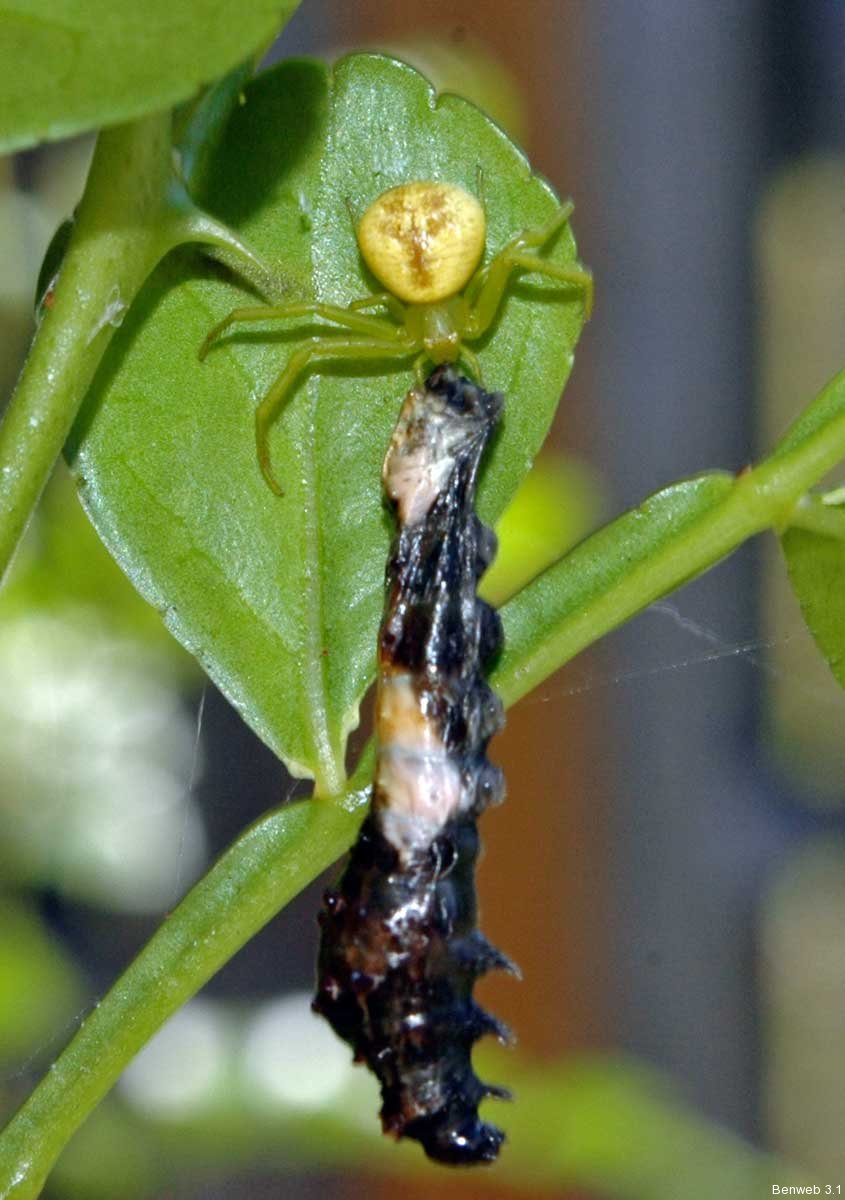There are many genera of crab spiders (also known as flower spiders) in the family Thomisidae. One of the more common in my yard is (I think) in the genus Mecaphesa (but here’s a good illustration of why I’m not positive about the ID). Like most crab spiders, these have a very variable appearance. In fact, they are able to vary their appearance to match the background against which they appear; it takes a bit of processing to get them to show up well when they’re photographed in situ.
I’ve written about these spiders before, but I saw one the other day and happened to have my camera with me, so I thought I’d at least take a picture:

As you can infer from the photo, they’re quite small; the dune sunflower that it’s perched on is only a couple of inches across. Not a threat to humans, although it might provoke startlement and wonder from any who happen to notice the little feller.
However, when we zoom in on their scale, they start to look a bit more daunting:

As you can see, their front two pairs of legs are MUCH longer than the middle or hind pair. These ambush predators rely on those long front legs to seize their prey rapidly, then they use their chelicerae (fangs) to inject venom to finish them off. According to the University of Kentucky web site about crab spiders,
Scientists think that the venom of certain crab spiders is more potent than that of most other spiders: this allows crab spiders to quickly paralyze the large and tough bees that often visit flowers. However, crab spider venom is not known to be especially dangerous to humans.
In case you’re wondering, the not “especially dangerous to humans” doesn’t mean being bitten wouldn’t hurt. It just means that you’ll probably feel, at most, an “ouch!” and some slight muscle cramping (to paraphrase Rod Crawford’s description of the typical response to Tarantula bites). This bears remembering. We live in such a sanitized world, so far removed from an everyday experience of nature, that any reminder of it (lizards, snakes, spiders), or even the possibility of slight discomfort caused by it, sends shudders of revulsion down our spines.
Like any wild animal, spiders should be treated with caution and as much knowledge as we can bring to bear on them. The more we know about them, the less frightened of them we need to be. If you’re a caterpillar, on the other hand, go ahead and be frightened. If you’re not wary, you are in for a rough time, as this “orange dog” (Giant Swallowtail cat) found out a couple of years ago:

Etymology
It’s entirely plausible that the name of this family of spiders derives from the Greek word thôminx, “string.” The suffix -idae is the typical New Latin suffix appended to the name of any organism to indicate that it is belongs to that taxon. (For example, gulls are “larids,” meaning they’re in the family Laridae.) However, the Century Dictionary, my go-to dictionary for etymology, gives a slightly more interesting derivation from its definition of Thomisus (the original name of a genus of this family): whip, scourge!
